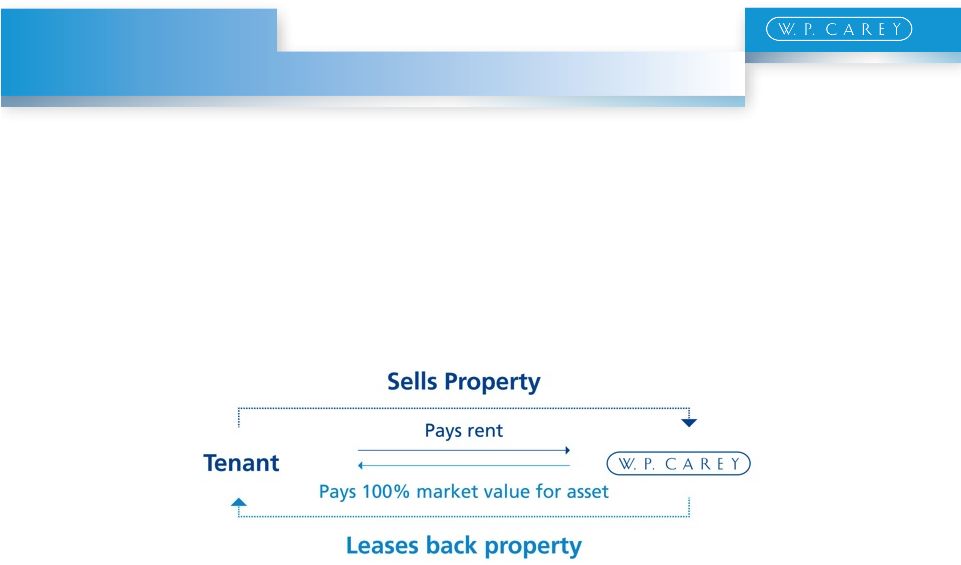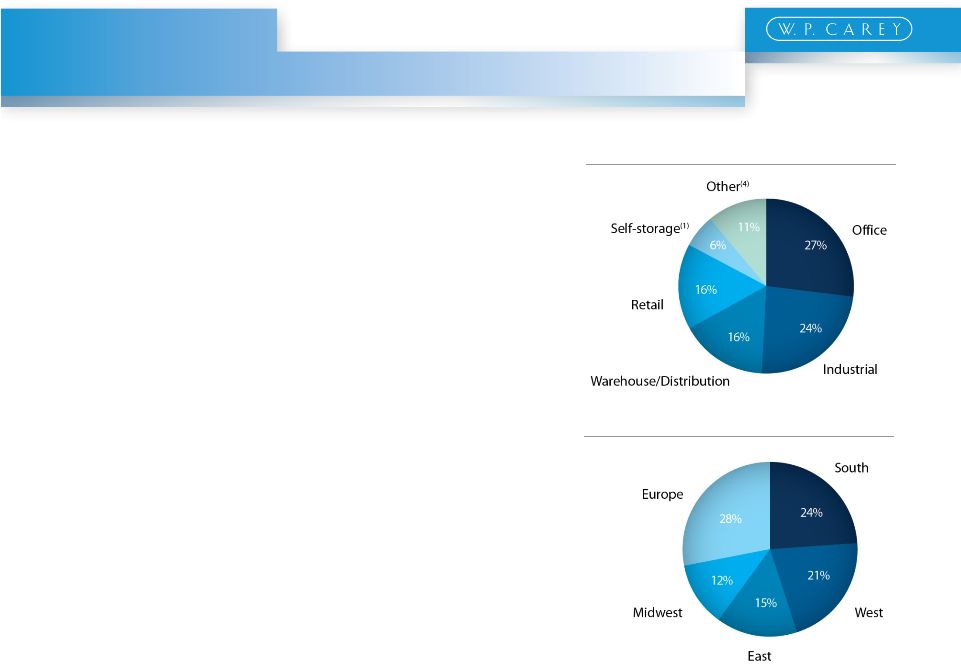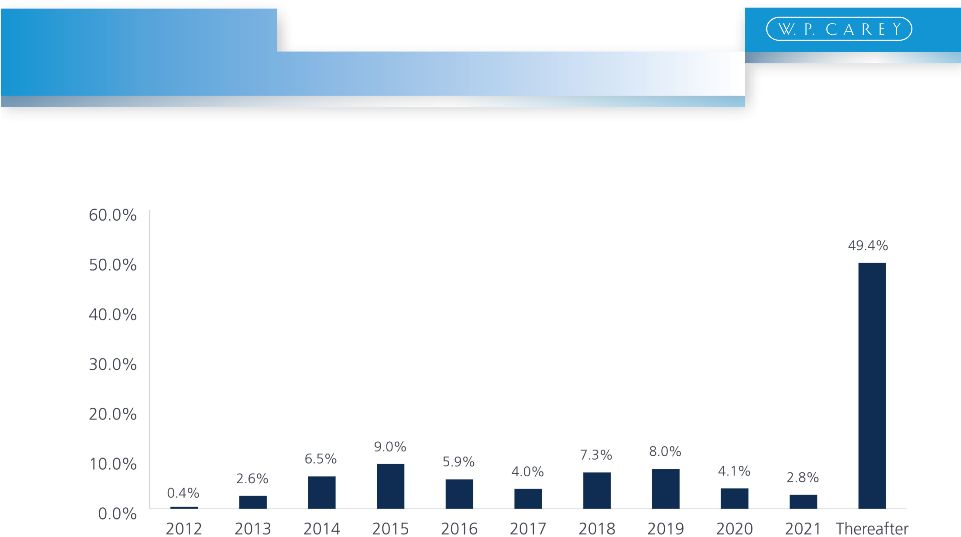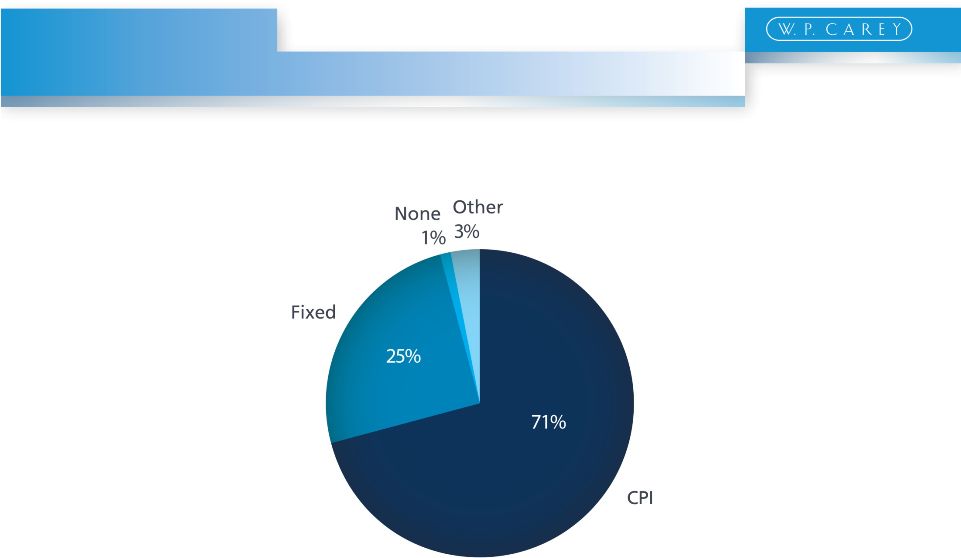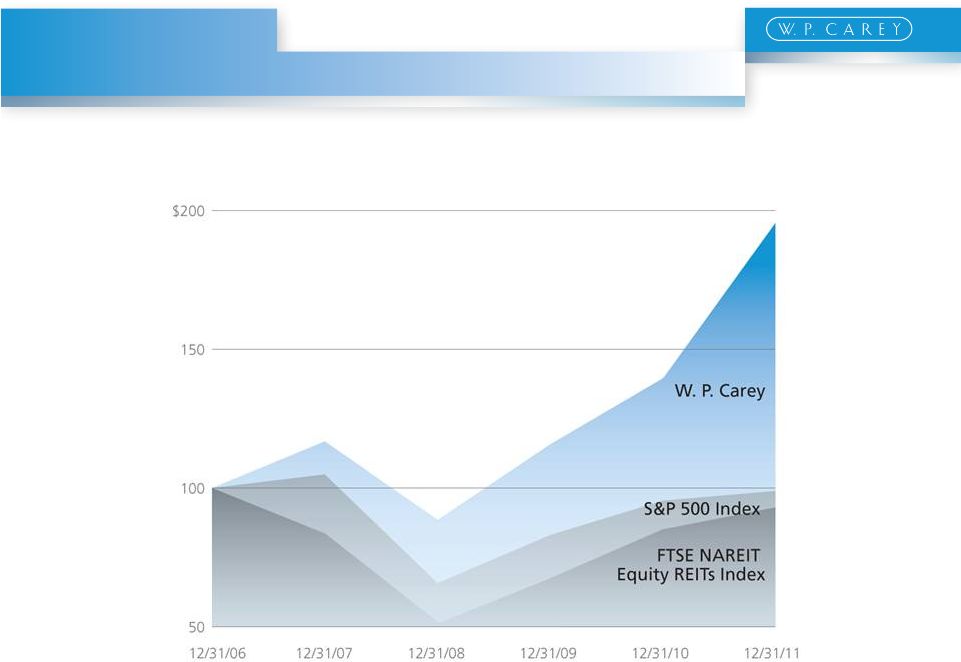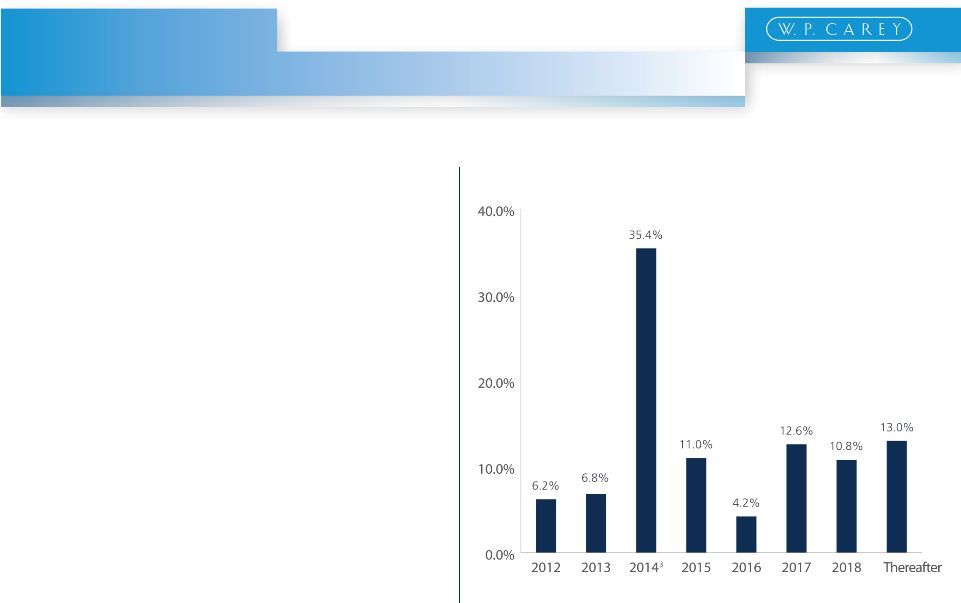Investing for the Long Run™ | 2 Disclosures W. P. Carey & Co. LLC, W. P. Carey Inc., and CPA ® :15 and can be identified by the use of words such as “may,” “will,” “should,” “would,” “assume,” “outlook,” “seek,” “plan,” “believe,” “expect,” proposed REIT Conversion and Merger. These statements are based on the current expectations of the management of W. P. Carey & Co. LLC, W. P. Carey Inc., and CPA ® :15. It is important to achievements of the combined company. Discussions of some of these other important factors and assumptions are contained in W. P. Carey & Co. LLC’s, W. P. Carey Inc.’s, and CPA ® :15’s rules and regulations of the SEC, none of W. P. Carey, CPA ® :15 or W. P. Carey Inc. undertakes any obligation to release publicly any revisions to the forward-looking statements to reflect events impairments and stock compensation. Additionally, we exclude merger expenses related to the proposed merger with CPA ® :15, which are considered non-recurring, and gains/losses in real Cautionary Statement Concerning Forward-Looking Statements: Certain of the matters discussed in this communication constitute forward-looking statements within the meaning of the Securities Act of 1933 and the Securities Exchange Act of 1934, both as amended by the Private Securities Litigation Reform Act of 1995. The forward-looking statements include, among other things, statements regarding the intent, belief or expectations of “anticipate,” “intend,” “estimate,” “forecast” and other comparable terms. These forward-looking statements include, but are not limited to, the “Investment Highlights” and statements regarding the benefits of the proposed REIT Conversion and Merger, Stable Cash Flows from Long-Term Leases, integration plans and expected synergies, the expected benefits of the proposed REIT Conversion and Merger, anticipated future financial and operating performance and results, including estimates of growth and value creation, and the expected timing of completion of the note that the combined company’s actual results could be materially different from those projected in such forward-looking statements. There are a number of risks and uncertainties that could cause actual results to differ materially from the forward-looking statements. Other unknown or unpredictable factors could also have material adverse effects on future results, performance or filings with the SEC and are available at the SEC’s website at http://www.sec.gov, including Item 1A. Risk Factors in the Annual Report on Form 10-K for the year ended December 31, 2011 of W. P. Carey & Co. LLC as filed with the SEC on February 29, 2012. These risks, as well as other risks associated with the proposed REIT Conversion and Merger, are more fully discussed in the Joint Proxy Statement/Prospectus that is included in the Registration Statement on Form S-4 that W. P. Carey Inc. filed with the SEC in connection with the proposed REIT Conversion and Merger on March 23, 2012, as amended. In light of these risks, uncertainties, assumptions and factors, the forward-looking events discussed in this communication may not occur. Readers are cautioned not to place undue reliance on these forward-looking statements, which speak only as of the date of this communication. Except as required under the federal securities laws and the or circumstances after the date of this communication or to reflect the occurrence of unanticipated events. Non-GAAP Financial Disclosure We believe that earnings before interest, taxes, depreciation and amortization (“EBITDA”) is a useful supplemental measure to investors and analysts for assessing the performance of our business segments, although it does not represent net income that is computed in accordance with GAAP, because it removes the impact of our capital structure and asset base from our operating results and because it is helpful when comparing our operating performance to that of companies in our industry without regard to such items, which can vary substantially from company to company. Adjusted EBITDA as disclosed represents EBITDA, as described herein, modified to include other adjustments to GAAP net income for certain non-cash charges such as estate, foreign exchange and derivatives which are not considered fundamental attributes of our business plans and do not affect our overall long-term operating performance. We exclude these items from Adjusted EBITDA as they are not the primary drivers in our decision making process. Our assessment of our operations is focused on long-term sustainability and not on such non- cash items, which may cause short term fluctuations in net income but have no impact on cash flows. We believe that Adjusted EBITDA is a useful supplemental measure to investors and analysts for assessing the performance of our business segments, although it does not represent net income that is computed in accordance with GAAP. Accordingly, EBITDA and Adjusted EBITDA should not be considered as alternatives to net income as indicators of our financial performance. EBITDA and Adjusted EBITDA may not be comparable to similarly titled measures of other companies. Therefore, we use EBITDA and Adjusted EBITDA as two of the measures of our operating performance when we formulate corporate goals, evaluate the effectiveness of our strategies, and determine executive compensation. Funds from operations (“FFO”) is a non-GAAP measure defined by the National Association of Real Estate Investment Trusts (“NAREIT”). NAREIT defines FFO as net income or loss (as computed in accordance with GAAP) excluding: depreciation and amortization expense from real estate assets, impairment charges on real estate, gains or losses from sales of depreciated real estate assets and extraordinary items; however FFO related to assets held for sale, sold or otherwise transferred and included in the results of discontinued operations are included. These adjustments also incorporate the pro rata share of unconsolidated subsidiaries. FFO is used by management, investors and analysts to facilitate meaningful comparisons of operating performance between periods and among our peers. Although NAREIT has published this definition of FFO, companies often modify this definition as they seek to provide financial measures that meaningfully reflect their distinctive operations. We modify the NAREIT computation of FFO to include other adjustments to GAAP net income to adjust for certain non-cash charges such as amortization of intangibles, deferred income tax benefits and expenses, straight-line rents, stock compensation, gains or losses from extinguishment of debt and deconsolidation of subsidiaries and unrealized foreign currency exchange gains and losses. We refer to our modified definition of FFO as adjusted funds from operations (“AFFO”). We exclude these items from GAAP net income as they are not the primary drivers in our decision making process. Our assessment of our operations is focused on long-term sustainability and not on such non-cash items, which may cause short-term fluctuations in net income but have no impact on cash flows, and we therefore use AFFO as one measure of our operating performance when we formulate corporate goals, evaluate the effectiveness of our strategies, and determine executive compensation. We believe that AFFO is a useful supplemental measure for investors to consider because it will help them to better assess the sustainability of our operating performance without potentially distorting the impact of these short-term fluctuations. However, there are limits on the usefulness of AFFO to investors. For example, impairment charges and unrealized foreign currency losses that we exclude may become actual realized losses upon the ultimate disposition of the properties in the form of lower cash proceeds or other considerations. | 





